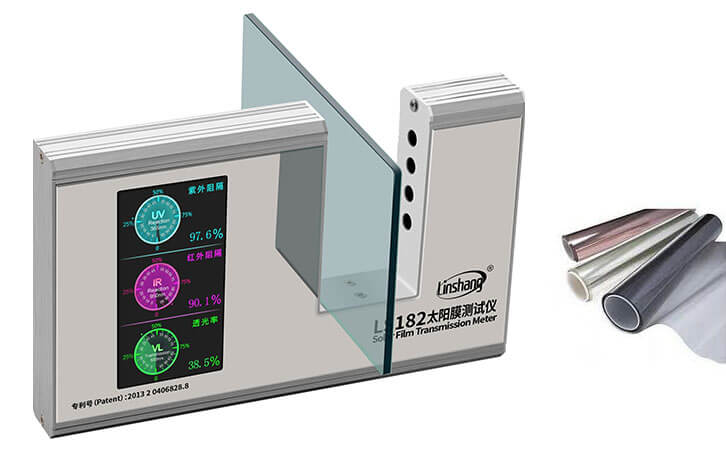Is the Light Transmission Meter Good or the Solar Film Killer?
In the solar film industry, there are solar film killers and light transmission meters. Which of these two instruments is better? Let’s find out the answer.
How the solar film killer works?
The solar film killer performs instantaneous irradiation when the film is tested by a iodine-tungsten lamp and identify the melting point of the material by the degree of thermal change after the solar film is heated. In fact, the temperature rises rapidly to about 200 degrees Celsius and the solar film is burned at a high temperature. But how to distinguish between metal and non-metal films? Metal film contains metal in its composition which has a high melting point, good reflection and heat insulation properties, so it is not easy to coke. However, the material of the non-metal film does not contain a metal component and the melting point is relatively low. So it is very easy to coke at a high temperature.
The drawbacks of using solar film killer:
1.The test time must be controlled within 3 seconds and the power will be automatically turned off after 3 seconds. If the test time becomes longer, any film will be coked. So this type of killer actually has certain safety hazards.
2. It is only a simple and rapid determination of the solar film melting point. The overall performance of the solar film, such as light transmission performance, ultraviolet shielding performance, thermal insulation performance can’t be scientifically and effectively judged.
Advantages of using a light transmission meter:
1. Direct display of UV rejection rate, infrared rejection rate and light transmittance, convenient for solar film testing and data reading.
2. Not only small in size, but also easy to carry.
3. It can simultaneously test ultraviolet 365nm, visible light 380-760nm, infrared 1400nm or 950nm three wavebands.
The solar film killer simply uses a melting point parameter to mislead consumers by giving an intuitive feeling. This is not true for assessing the pros and cons of the solar film. Instead, the overall assessment should be carried out through comprehensive indicators such as transmittance, UV, and thermal insulation properties. Testing with a professional light transmission meter is the best.
If you are also interested in the split light transmittance meter, please refer to https://www.linshangtech.com/tech/tech450.html
- Choosing the Right Window Tinting Film
- Window Tint Meter | Pros and Selection Methods of Architectural Membrane
- Advantages of LS110H and LS110A Split Transmission Meter
- Best Choice:LS182 Solar Film Transmission Meter
- Solar Power Lightens Up with Thin-Film Technology
- What is the Solar Heat Gain Coefficient Ratings (SHGC)
